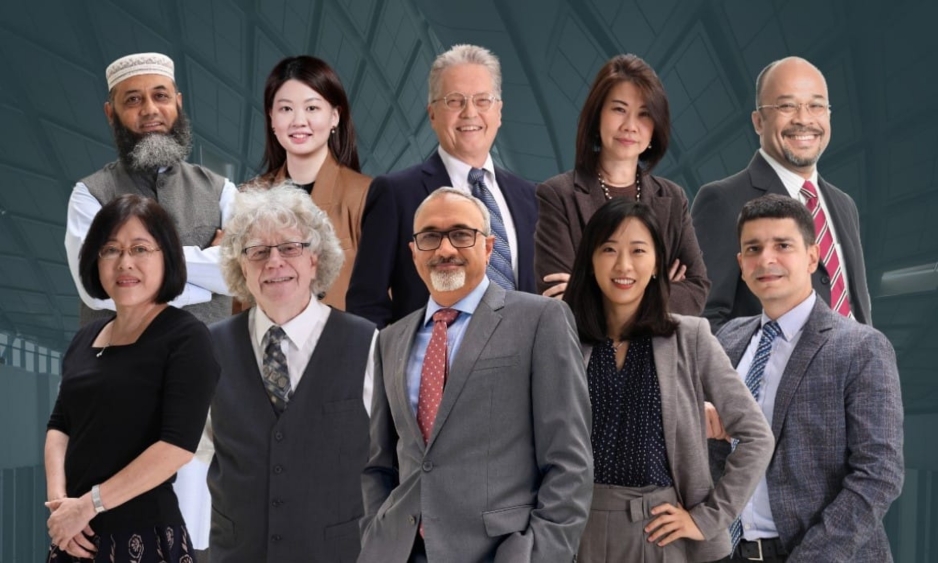Yes, you read it right. The title of this piece is ‘Great to Good’. I’m going to talk about how, in the 21st Century, we need ‘Goodness’ more than ‘Greatness’ when it comes to innovation. Between 1996-2001, Jim Collins’ team researched and wrote a bestselling book called Good to Great. They described 11 out of 1,435 companies that had shown the highest level of success over the decades.
Most of them were organizations that ‘make and sell’ products (Abbott Laboratories, Kimberly-Clark, Philip Morris, and Gillette Company). Other books such as Built to Last (1994) by the same author and In Search of Excellence (1982) by Tom Peters made similar studies with concurring results.
However, the majority of these great 20th century companies failed to sustain their level of greatness in the Open-Source era. The management consultant giant McKinsey and Co. did a follow-on study that found 32 of the 50 companies described in these books to only matched or underperformed the market over their subsequent 15-to-20-year period. In fact, the ‘great’ Circuit City and Kodak both went bankrupt.
The question is “Why?”
If I asked you to name some innovations of the 20th Century, which ones would you think of? Well, many of you might already be thinking “Stop asking and just Google them, silly!” That is true; excuse me. So, I typed ‘Innovations of the 20th Century’, and the results I got are 1) Nuclear Power 2) Personal Computer 3) Airplane 4) Automobile 5) Antibiotics 6) Television, etc. We are familiar with all these inventions.
Here is another question: Do you know who these people are? And what they invented? In parentheses are their dates of birth. Charles Darwin (1859), Thomas Edison (1879), Albert Einstein (1921), Alexander Fleming (1928), Edwin Land (1948), Robert Metcalfe (1973), and Peter Dunn & Albert Wood (1998)? They were inventors of the 20th Century; many of which gave rise to the said products. Now, how about these?
Jack Ma (2000), Jeff Bezos (2003), Mark Zuckerberg (2004), Reed Hastings (2007), Brian Chesky (2008), Travis Kalanick (2009), Anthony Tan (2012). They were also inventors, but of the 21st Century. Obviously, all names listed are ‘innovators’ of their time. But the real question is, what is the difference between the first and second sets? The answer, to me, is how the meaning of innovation has changed.
We have spent over a century making and producing ‘things’. Never has the world experienced so much wealth, consumed so much resources, collected so much assets, and generated so much wastes. In fact, most of us own at least 4 of the 6 examples of Innovations of the 20th Century that I outlined above. Books such as Consumptionomics (2011) by Chandran Nair and Abundance:
The Future Is Better Than You Think (2012) by Peter H. Diamandis provides further evidence of this prosperity. By the way, in case you were wondering, Peter Dunn & Albert Wood (1998) are inventors of the performance-enhancing drug Viagra. Innovation in the 21st century, however, is about sharing – not producing. If I were to now Google Innovations of the 21st Century; here is what it would tell me about inventions that are impacting lives:
“The world’s largest taxi firm, Uber, owns no cars. The world’s most popular media company, Facebook, creates no content. The world’s most valuable retailer, Alibaba, carries no stock. And the world’s largest accommodation provider, Airbnb, owns no property. Something big is going on.” These businesses own virtually nothing they are providing to customers, yet they have created tremendous values and changes in the world. Unicorns, Decacorns and Hectocorns are the themes of the present era.
It is the age of making money out of nothing; what Hamish McRae @TheIndyBusiness dubbed ‘The rise of content non-generator’. As a matter of fact, businesses of the 21st Century are being invested based on their ‘value-ation’ rather than the traditional Return on Asset or Profit & Loss statements. Even Google does not own the search results that were returned. It merely drew them from existing data generated by millions of resources around the world.
The innovations in the 21st Century are different. Something big is indeed going on. The 20th Century was an era of geniuses; one needs not ponder for long to think of Albert Einstein (1879-1955), the inventor of the E = mc2 equation; the special theory of relativity; and a recipient to the Nobel Prize in photoelectric, which serves as the basis for Quantum Physics. Or, even before that, we had Thomas Edison (1847-1931) who was a prolific inventor, holding 1,093 US patents in his name.
These genious discoveries have since gave birth to products like nuclear power, lights, television, automobile, spacecraft etc. Such influence partly explains why most parents strive to raise their kids to be as smart as possible. The genius craze led to children books with titles like ‘Raising Genius’, the ‘Baby Genius’ DVDs, and movies such as ‘Goodwill Hunting’, starring Matt Damon as the improbable ‘genius’.
Notice that none of the innovators in my second list has a Nobel Prize. And I think it is unlikely that any of them will ever get one. Innovations of the 21st Century era do not rely on one to discover secret codes of the universe. Facebook basically lets people around the world share their diaries; Airbnb is a brokerage for vacant rooms; and Grab is a virtual concierge who goes out and get us a cab. There is no complex ingenuity at play here; only laymen who see questions that the world has been waiting for answers.
These start-ups simply integrate and utilize things that already exist to provide good answers. In the current era of resource abundance, one does not need to have an IQ of Einstein’s, or to dedicate a life of failing 10,000 times like Edison to concoct an invention. A good idea or two will suffice. 20th Century was about a few people finding GREAT discoveries. 21st Century is about all of us, using the breakneck speed connectivity that technology provides, to do GOOD things together for a better future. That is my meaning of Great to Good.
Leadership Insights
- The New S Curve: Organizations in various countries that I am working with are all buzzing about disruptive innovation – how to build the new growth cycle? To begin cracking that code, one must understand that innovations of this era are unlike anything we have ever seen before. I would argue that even the iPads, iPhones, electric cars, or robotics are all innovations of the previous era; just with substantial improvement made by the evolution of technologies. On the other hand, innovations in the 21st Century are about connecting, linking, integrating, and creating a better future. They are not addressed by appointing an R&D team, integrated the best of tech, stretching product development to design new models and services, or even hire great talent. The crux of innovation in this very age is about taking what already exists and synergizing new values out of it. Only by shifting how your people think about innovation and by letting the cream rise to the top will you achieve such breakthrough leadership.
- Criteria for Innovation in the 21st Century: Rachel Botsman and Roo Rogers, authors of What’s Mine Is Yours: The Rise of Collaborative Consumption (2010), described key components of these sharing innovations: 1) Critical Mass: reaching the target groups with massive number of people. This is the reason why Amazon.com, Alibaba, and Uber endured their years of profit loss in order to build their network. 2) Idling Capacity: noticing the existing resource that can be utilize. For examples, Air Asia allowing passengers to print their own boarding pass from home; banks letting customers carry out transactions via the internet; and Airbnb uncovering the unoccupied spaces in the community and unleashing them for rent. 3) Common Base: willingness to share interests, knowledge and capabilities between peers. This happens when we share our life stories on Facebook, relying on HappyFresh workers to buy our grocery for us, or report a crash on Waze to benefit other drivers. Lastly, 4) Trust Creation: the system for building peer groups. The Grab app entrusted us to getting on a stranger’s car because we are comforted by the ‘stars’ given, for example.
- The Time is Now: This golden opportunity of the 21st Century is literally up for grab – pun intended. We are now living in an era where innovations are not limited to selective people with genius IQ. Thus, be diligent in your search for new knowledge; be brave in challenging the boundary of what you know; find a simple yet unresolved problem that has been making you sad or angry. Then, put on your leadership hat. Think about how this problem also affects other people like you? What might be a pent-up resource that can be released to address this challenge? Will the people be open to putting in their own efforts and spread the growth? Finally, identify what connectors must be made to build trust and pave way for that society of sharing.
Welcome to Great to Good innovation. Strive for ‘Goodness’ as opposed to ‘Greatness’. And let’s make our world a better place.

Dr Thun Thamrongnawasawat (Tan) is one of the foremost experts on dissecting complex management and business models and cascading them for easy implementation by companies across different industries. His innovative B.A.S.E. model has inspired numerous organizations to transform. He’s the author of the Brain-BASEd Leadership book series (2013-2016), a bestselling The Leadership Journey (2018) and a regular newspaper columnist. In 2015, Dr Thun was the recipient of World HRD Congress’s “Global Coaching Leadership Award” and named “Consultant of the Year” by the Ministry of Industry, Thailand.
He can be contacted at thun@asb.edu.my.
If you are interested to know more about our exciting Executive Education program click here.







